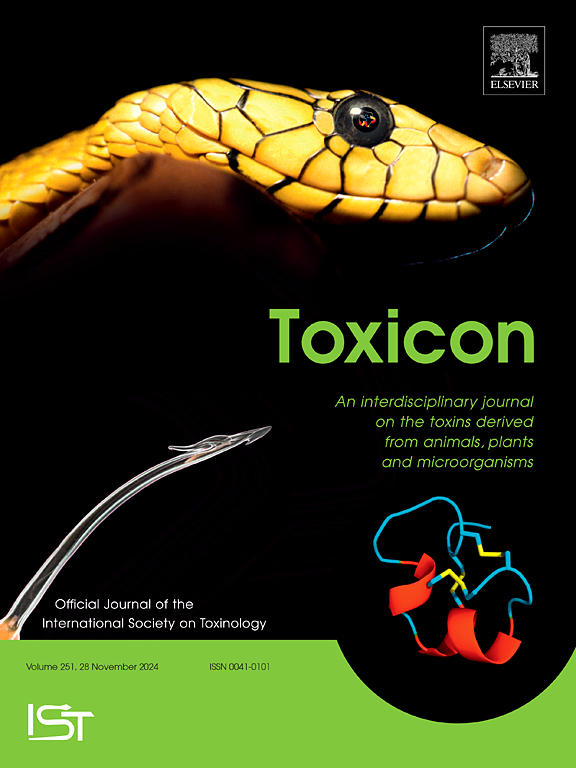Effects of botulinum toxin on pain control mechanisms, muscle structure and cortical reorganization, a mini-review
IF 2.6
4区 医学
Q2 PHARMACOLOGY & PHARMACY
引用次数: 0
Abstract
Spasticity often results in significant disability, which complicates rehabilitation and daily activities. This review explores the role of botulinum toxin type A (BoNT-A) in the treatment of spasticity, focusing on its effects on muscle structure and activity, function, cortical reorganization, and pain. Our findings indicate that BoNT-A injections improve motor function and gait, particularly in stroke patients, by reducing abnormal muscle activity and enhancing postural control. However, BoNT-A may also induce unwanted biomechanical changes, such as muscle atrophy and alterations in contractile elements, which could impact long-term muscle function.
Regarding pain management in spasticity, BoNT-A has shown promise by reducing both peripheral and central sensitization mechanisms. Additionally, BoNT-A influences the central nervous system (CNS) by inducing cortical reorganization, which may further contribute to clinical improvements.
Lastly, BoNT-A treatment requires careful consideration of individual patient characteristics to optimize outcomes and minimize side effects. A multidisciplinary approach that combines BoNT-A with physical therapy is essential to maximize functional recovery and improve the quality of life in patients with spasticity.
肉毒毒素对疼痛控制机制、肌肉结构和皮质重组的影响
痉挛常常导致严重的残疾,使康复和日常活动复杂化。本文综述了A型肉毒毒素(BoNT-A)在痉挛治疗中的作用,重点介绍了其对肌肉结构和活动、功能、皮质重组和疼痛的影响。我们的研究结果表明,注射BoNT-A可以通过减少异常肌肉活动和增强姿势控制来改善运动功能和步态,特别是对中风患者。然而,BoNT-A也可能引起不必要的生物力学变化,如肌肉萎缩和收缩元素的改变,这可能会影响长期的肌肉功能。关于痉挛的疼痛管理,BoNT-A通过减少外周和中枢致敏机制显示出希望。此外,BoNT-A通过诱导皮质重组影响中枢神经系统(CNS),这可能进一步有助于临床改善。最后,BoNT-A治疗需要仔细考虑个体患者的特点,以优化结果和最小化副作用。结合BoNT-A和物理治疗的多学科方法对于最大限度地恢复功能和改善痉挛患者的生活质量至关重要。
本文章由计算机程序翻译,如有差异,请以英文原文为准。
求助全文
约1分钟内获得全文
求助全文
来源期刊

Toxicon
医学-毒理学
CiteScore
4.80
自引率
10.70%
发文量
358
审稿时长
68 days
期刊介绍:
Toxicon has an open access mirror Toxicon: X, sharing the same aims and scope, editorial team, submission system and rigorous peer review. An introductory offer Toxicon: X - full waiver of the Open Access fee.
Toxicon''s "aims and scope" are to publish:
-articles containing the results of original research on problems related to toxins derived from animals, plants and microorganisms
-papers on novel findings related to the chemical, pharmacological, toxicological, and immunological properties of natural toxins
-molecular biological studies of toxins and other genes from poisonous and venomous organisms that advance understanding of the role or function of toxins
-clinical observations on poisoning and envenoming where a new therapeutic principle has been proposed or a decidedly superior clinical result has been obtained.
-material on the use of toxins as tools in studying biological processes and material on subjects related to venom and antivenom problems.
-articles on the translational application of toxins, for example as drugs and insecticides
-epidemiological studies on envenoming or poisoning, so long as they highlight a previously unrecognised medical problem or provide insight into the prevention or medical treatment of envenoming or poisoning. Retrospective surveys of hospital records, especially those lacking species identification, will not be considered for publication. Properly designed prospective community-based surveys are strongly encouraged.
-articles describing well-known activities of venoms, such as antibacterial, anticancer, and analgesic activities of arachnid venoms, without any attempt to define the mechanism of action or purify the active component, will not be considered for publication in Toxicon.
-review articles on problems related to toxinology.
To encourage the exchange of ideas, sections of the journal may be devoted to Short Communications, Letters to the Editor and activities of the affiliated societies.
 求助内容:
求助内容: 应助结果提醒方式:
应助结果提醒方式:


